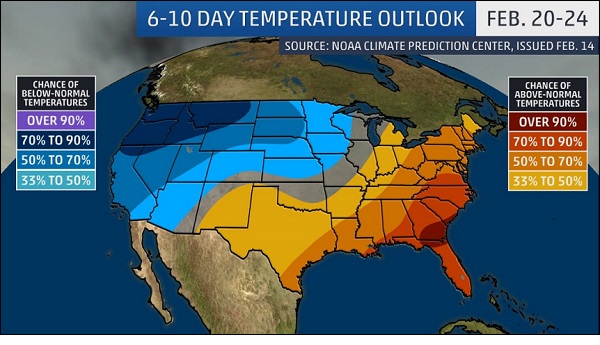
|
|

|
|
| April 26, 2024 |
|
The polar vortex just split. What does that mean for us? 
There are all sorts of things going on above our heads.
The polar vortex, winter's favorite whipping boy, has split into two pieces. On top of that, we're also enduring "sudden stratospheric warming." Should we head for the hills? What does it all mean? First of all, remember that the polar vortex is a large area of cold air high up in the atmosphere that normally lives over the poles (as its name suggests) but, thanks to a meandering jet stream, parts of the vortex can slosh down into North America, Europe or Asia, helping to funnel unspeakably cold air down here where we live. It also sometimes divides, then gets back together again, like the cop in Terminator 2. In short, there are now two smaller vortices, the Weather Channel explains: one over western Canada and another over Europe. In the near term, for the rest of February, this means unusually cold temperatures are likely in the western U.S. and in much of Europe. For the northeastern U.S., however, after a chilly and potentially snowy weekend, most of next week should be quite mild to warm, with temperatures in the 60s as far north as New England. Across the Arctic, where the polar vortex typically stays locked, a phenomenon known as "sudden stratospheric warming" also recently occurred. This warming results from a breakdown of the usual high-altitude westerly winds, the United Kingdom's Met Office said. This particular warming is a "fairly extreme event," said meteorologist Judah Cohen of AER, a Verisk Analytics company. He also said that "polar stratospheric temperatures I believe are predicted to be near record highs." While stratospheric warming sounds like it's good news for warm weather lovers, it's typically the opposite: The stratosphere is above the troposphere, which is where our weather occurs. When the stratosphere warms, it often means cold weather down here where we all live. The stratospheric warming also caused the splitting of the polar vortex, Mashable said. As for the weather for March, the Climate Prediction Center Thursday said that the Northeast, Florida and the Southwest should see a warmer-than-average month. The chilliest weather is likely in the Pacific Northwest, northern Rockies and northern Plains. There's still a chance, however, that some of the chill from the polar vortex piece that's over the western U.S. could eventually slosh its way east, Cohen said, perhaps delivering winter's last hurrah in early March. (Source: USA Today) Story Date: February 19, 2018
|